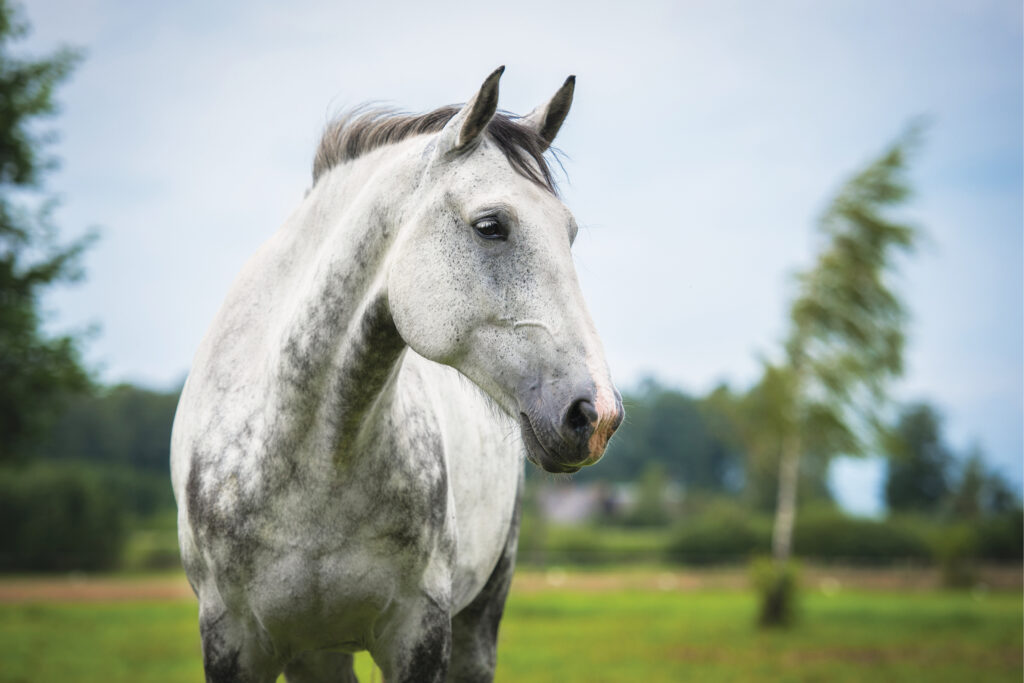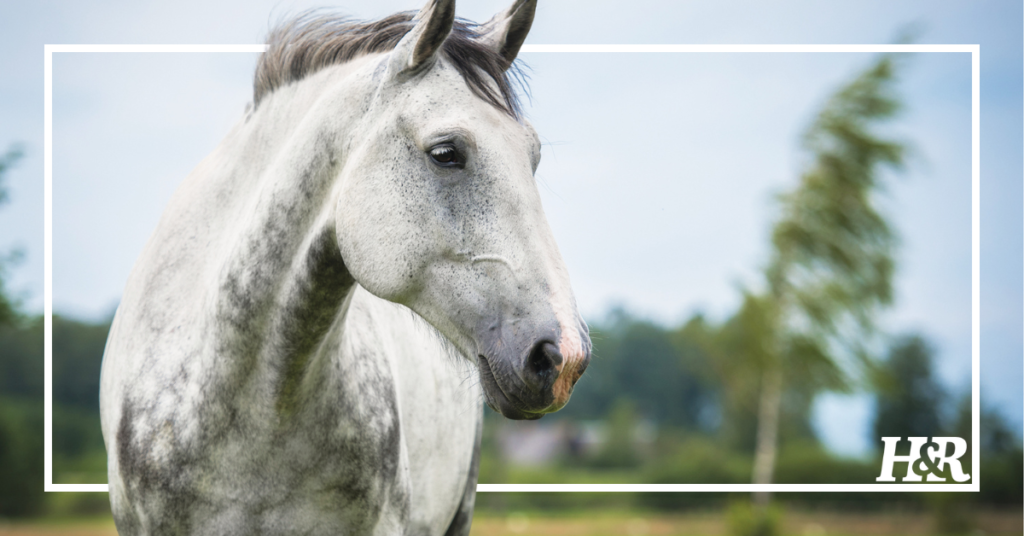
If you have a horse with a white haircoat or pink, exposed skin (think: pink, mostly hairless muzzles), they’re even more likely to get sunburned or struggle with sun sensitivity. Your best bet to avoid sunburn is to avoid excessive sun exposure, but sometimes that can be tricky.
You’ve likely noticed that a horse with white hair has pink skin underneath, not black. Even a horse with an otherwise dark haircoat may have pink skin underneath white markings on the legs or face. A horse’s haircoat and skin color have to do with the amount of melanin a horse has. And just like in humans, the more melanin the skin has, the less susceptible it is to burn because of natural protective factors. This means that your gray, Appaloosa, Paint, or pinto horse, or horse with a bald face or wide blaze, may be more likely to burn because they have less protective melanin in their skin.
READ MORE: Hot Weather Horse Care
Preventing Sunburn in Horses

✅ limit exposure
If it’s an option, keep your horse indoors and turn out at night when the sun’s down. If you don’t have a barn to keep them in and out of the sun, try to provide some shade during the day.
✅ use protection
UV-protecting fly masks with ear and nose covers can limit the sun exposure and harmful rays in sensitive areas that cause sunburn.
✅ apply sunscreen
Natural ingredients are less likely to irritate the skin. Two ingredients commonly used in both horse and human products are zinc oxide and titanium dioxide.
✅ soothe burnt skin
You can apply aloe vera, which is a natural moisturizer that reduces the heat in the burn. Desitin can also be applied for protection and soothing.
Sunburn or Something Else?
If your horse has what seems to be chronic sunburn, it may not be what you think it is! Mud fever can be mistaken for sunburn because of skin irritation, blistering, and crusty lesions.
Mud fever is caused by a bacterial infection, which weakens your horse’s skin barrier and results in irritation. Most common in horses that live in muddy conditions, it typically affects the legs because they’re nearest to the mud and your horse’s nose. The damage to the skin that looks like sunburn occurs because of photosensitization. The combination of your horse’s dampened immune system and ingestion of plants containing photodynamic pigments makes your horse more sensitive to sunlight.
If your horse seems to be consistently sunburned, check with your vet. It may not be what you think, and it will impact your treatment plan.
Note: Some plants and medications can also make your horse more susceptible to sunburn, so be mindful of your horse’s sun exposure if they’re ingesting something new.
—H&R—

